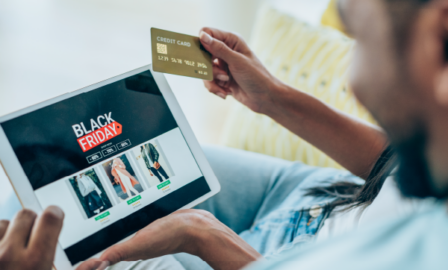What You Need to Know About eCommerce Fulfillment in 2022
With revenue projected to reach upward of $563 million by 2025, retail eCommerce in the U.S. has grown quickly due to a rise in online shoppers. This growth requires adaptation, which means the eCommerce fulfillment industry must adjust and make changes to meet the growing market demand. eCommerce fulfillment is the overarching process that begins when a customer places an order online and ends when the product is delivered. This process is influenced by many business areas and requires significant cohesion to ensure a positive customer experience.
Among other factors, labor and space will be key in meeting the ever-growing expectations of eCommerce fulfillment centers. However, both are currently stretched thin and will need to be reassessed to speedily turn over inventory and meet the growth in sales. The benefits of investing in an eCommerce fulfillment strategy also include cost savings, which are underscored by the fact that the average cost to fulfill an order is 70% of the order value. As the space and related opportunities continue to develop, and customers constantly reset their expectations of delivery time and accuracy, it is crucial for the eCommerce fulfillment industry to continue to evolve and understand future trends.
The Role of eCommerce Fulfillment in Customer Experience
Customers are the driving force behind the growth in the eCommerce fulfillment industry and it is necessary to understand their current needs and future wants. Today, customers want options and the ability to choose their preferred shipping method. This has led to a myriad of choices for customers with variations of ordering and delivery method combining the benefits of brick-and-mortar and online. It is important to recognize that no matter the ordering or pickup/delivery method, the customer experience is essential to maintain customer loyalty. This stands true as new buying methods gain traction, such as buy online pick up in-store (BOPIS) and curbside pickup. The experience of combining online and in person, along with 59% of consumers reporting interested in BOPIS, shows fulfillment needs to continue to be flexible and adaptable.
Technology + eCommerce Fulfillment
Automation in warehouse fulfillment centers is growing as the inefficiencies of manual processes become more obvious and growing demand makes it difficult to sustain fulfillment needs. Fulfillment centers are assessing redundant tasks in their processes and implementing automation to reduce cost and increase efficiency. Key fields that are being assessed for improvement are demand, labor, and scalability. Order volume should be considered with any proposed automation because it will impact the cost-effectiveness and savings of the proposal. With labor shortages throughout supply chains and businesses, analyzing manual and remedial tasks can help place humans in more critical roles to optimize resource availability. Finally, scalability plans should be kept in mind as businesses look to grow because without preparing for future fulfillment center scalability there will be difficulties keeping up with demand over time. As demand and needs evolve, evaluating these aspects is important to ensure orders are being fulfilled efficiently and accurately.
Augmented reality (AR) is also being used by fulfillment centers to assist with picking and packing in the warehouses. Using AR creates a more productive process by removing human error and improving accuracy with respect to finding, putting away, and picking product. At this moment, AR technology is not widespread among fulfillment centers, but its use is growing within warehouses and will continue to grow over the years.
Outsourcing
eCommerce fulfillment can be handled in various ways such as in-house, a 3PL, or a hybrid of both all of which depend on the business’s current and future goals. Over time the fulfillment strategy may change and need to be adjusted to what works best for your business. It may vary but businesses normally keep fulfillment in house when they want to maintain high visibility, handling methods are very detailed and would be costly to teach a 3PL, and/or the volume of orders are too low to seek out outside assistance. However, when capacity has been reached and more insight is needed businesses begin to seek out a relationship with a 3PL. When creating a relationship with a 3PL, businesses have the opportunity to be in additional geographic locations, which expands inventory space, and potentially decreases delivery time to customers. Developing a relationship with a 3PL is attractive to many businesses because it can create cost savings by making a more efficient process while not having to invest in new technology themselves.
What next?
Overall, trends in the industry are influenced by time, money, and customers which require an assessment of the businesses’ targets of their eCommerce fulfillment. High expectations with fulfilling orders at a faster and more accurate rate is growing at a rapid pace, and is evidence to why the eCommerce fulfillment market size is expected to hit $168.72 billion by 2028. Since the current trends are not able to be instantaneously adapted, it is important to assess your business’s goals today and determine your business’s strategy on how to best adapt.
Subscribe to Clarkston's Insights
Subscribe to Clarkston's Insights
Contributions from Addie Schmidt



